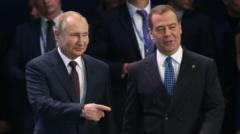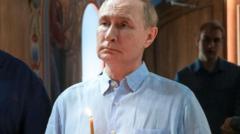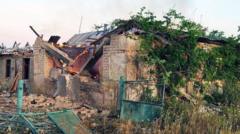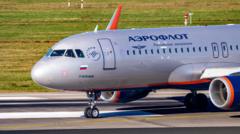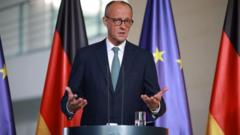In Kyiv, former drone operator Pavlo grapples with the haunting sounds of his past as he adjusts to civilian life following his service. This article explores the psychological effects of drone warfare on soldiers and civilians, highlighting the syndrome known as "droneophobia," which represents a profound transformation in trauma linked to the distinctive sounds of drones.
The Haunting Sound of Drones: Trauma Transcending Battlefields in Ukraine

The Haunting Sound of Drones: Trauma Transcending Battlefields in Ukraine
As the war in Ukraine increasingly relies on drone warfare, soldiers and civilians alike face psychological scars that extend beyond the frontlines, reshaping their everyday lives.
In a modest apartment in Kyiv, the sounds of war linger for Pavlo, a 30-year-old drone pilot who has returned from Ukraine’s frontlines. Once adept at flying first-person view (FPV) drones under the pressure of battle, his life now revolves around a broken drone in a pizza-sized box, a stark reminder of the persistent threat he faced.
“Being hunted,” Pavlo describes, as he reflects on a year of chasing enemy forces and targeting positions with drones that have replaced traditional heavy weaponry in modern warfare. These small but lethal drones have become tools of terror, relentlessly pursuing soldiers and enforcing an atmosphere of anxiety and panic. “You cannot hide, and running away is pointless,” he adds.
Although Pavlo has returned home, he is haunted not only by memories but also by the sounds that accompany civilian life. Everyday machinery—lawnmowers, motorcycles, and even air conditioners—trigger traumatic memories. Nature brings no solace either; sounds of buzzing insects induce a wave of panic. “It’s hard to enjoy the outdoors anymore,” he admits.
Dr. Serhii Andriichenko, chief psychiatrist at Kyiv's military hospital, has observed a significant rise in mental health issues among returning soldiers due to the psychological ramifications of drone warfare. The phenomenon has coined the term “droneophobia,” described as a heightened sensitivity to sounds reminiscent of drones, such as small engines or mechanical whirring. Many veterans suffer from acute stress disorders, with ordinary sounds evoking memories of impending threats.
Savur, another veteran who lost his arm due to an FPV drone strike, acknowledges this constant tension. Unlike past conflicts that fueled fears of loud shells, the drone war has altered perceptions. “The sound of a shell may be brief, but the drones are an ever-present noise,” he says.
The implications stretch beyond the battlefield as drone warfare has expanded combat zones. Soldiers can be targeted from distances once deemed safe. Nazar Bokhii, a commander, experienced this firsthand; he was severely injured by a surprise drone while relaxed in his dugout. Although Bokhii manages his PTSD, he understands how the sound of drones can psychologically torment not just soldiers but also their adversaries, exploiting the element of fear inherent in sound.
The civilian population faces a different yet equally harrowing reality. In Ukrainian cities like Kherson, drones have shifted from battlefield tools to instruments of terror against civilians, categorized as war crimes by international watchdogs. Reports indicate that drone strikes have tragically claimed numerous civilian lives. Survivor Dmytro Olifirenko described the relentless stress of living under the threat of such attacks, exacerbated by constant vigilance for any buzzing sound overhead.
For civilians and soldiers alike, the war’s psychological toll manifests through an intensified perception of danger. Ordinary urban sounds have become harbingers of anxiety, creating a gauntlet of reminders of past traumas. As Pavlo succinctly states, “You begin to see the world as a battlefield.” This complex interplay of realities highlights the lingering impacts of modern warfare, where the lines between home and combat zones blur indefinitely.
The unique psychological challenges posed by drone warfare extend far beyond immediate threats, reshaping the identities of those who serve and the communities they return to. The haunting sound of drones, once mere tools of warfare, have transformed into omnipresent harbingers of fear and trauma, affecting every aspect of life in a nation at war.

